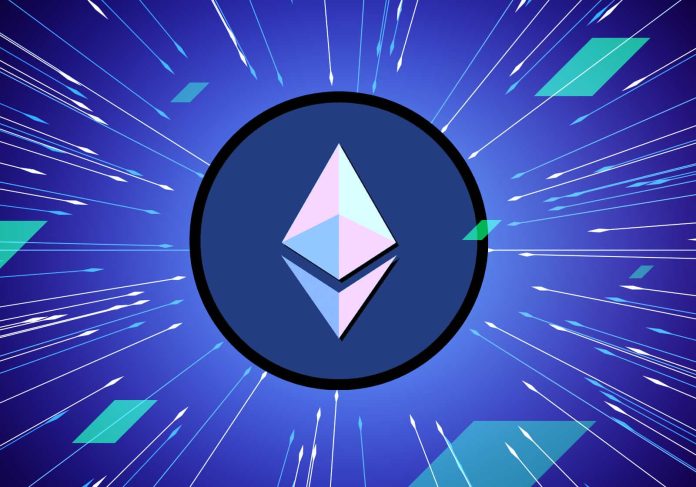The Rise of Ethereum: Why It’s More Than Just a Cryptocurrency
When you think of cryptocurrency, the first name that likely comes to mind is Bitcoin. However, in recent years, another cryptocurrency has been gaining immense attention: Ethereum. While it shares many similarities with Bitcoin, Ethereum is far more than just a digital currency. In fact, Ethereum has become a foundational technology that’s changing how we think about money, contracts, and even the entire internet.
In this article, we’ll explore why Ethereum is more than just a cryptocurrency, how the Ethereum blockchain is powering innovations beyond simple transactions, and what makes it such a transformative technology.
1. What is Ethereum?
At its core, Ethereum is a blockchain-based platform that enables developers to build and deploy decentralized applications (dApps). While Bitcoin is primarily designed as a peer-to-peer electronic cash system, Ethereum was developed to enable smart contracts—self-executing contracts with the terms of the agreement directly written into code.
The Ethereum blockchain is a decentralized ledger that records transactions and keeps track of who owns what. However, its true potential lies in its ability to go beyond just recording transactions. Ethereum allows for programmable money and decentralized applications (dApps) to run on its network, opening the door to an entirely new ecosystem of decentralized services.
2. Ethereum Use Cases: More Than Just Digital Currency
While Ether (ETH), the native cryptocurrency of the Ethereum blockchain, is used for transactions and as a store of value, the true power of Ethereum lies in its versatile platform and the wide range of use cases it supports.
A. Smart Contracts
One of the most revolutionary aspects of Ethereum is its ability to execute smart contracts. These contracts are automated, self-executing agreements where the terms of the contract are written directly into code. Smart contracts eliminate the need for intermediaries (like lawyers or notaries), reducing costs, increasing efficiency, and reducing the risk of human error.
For example, in a traditional real estate transaction, the buyer, seller, and multiple intermediaries (agents, lawyers, etc.) are involved. With smart contracts on Ethereum, the transaction could be automated and completed without intermediaries, ensuring the process is transparent, cost-effective, and secure.
B. Decentralized Finance (DeFi)
Ethereum is the backbone of the DeFi (Decentralized Finance) movement, which is rapidly reshaping the financial sector. Traditional finance is built on centralized institutions like banks, brokers, and insurance companies. DeFi, however, leverages Ethereum’s blockchain and smart contracts to provide financial services in a decentralized, peer-to-peer manner.
Using DeFi protocols, users can lend, borrow, trade, and invest without relying on banks or other financial institutions. Popular DeFi applications like Aave, Uniswap, and Compound run on the Ethereum blockchain, allowing anyone with an internet connection to access these services without needing a third party.
DeFi use cases powered by Ethereum include:
- Lending and Borrowing: Users can lend their assets and earn interest or take out loans with collateral.
- Decentralized Exchanges (DEXs): Platforms like Uniswap allow users to trade cryptocurrencies directly with each other, bypassing centralized exchanges.
C. Non-Fungible Tokens (NFTs)
NFTs (Non-Fungible Tokens) have exploded in popularity, and Ethereum is the primary blockchain powering the NFT market. NFTs represent ownership of a unique asset, such as digital art, collectibles, or even virtual real estate. Unlike cryptocurrencies like Bitcoin, which are interchangeable (or fungible), NFTs are unique and cannot be exchanged on a one-to-one basis.
The Ethereum blockchain allows creators to tokenize their art and sell it as NFTs, while buyers gain proof of ownership through the blockchain. Artists retain more control over their work, and they can receive royalties each time their NFT is resold. Major marketplaces for NFTs, such as OpenSea and Rarible, are built on the Ethereum network.
D. Decentralized Autonomous Organizations (DAOs)
A Decentralized Autonomous Organization (DAO) is a type of organization that is governed by code rather than a centralized authority. DAOs run on the Ethereum blockchain and are typically powered by smart contracts. The members of a DAO vote on decisions and allocate funds, and everything is recorded on the blockchain for transparency and security.
DAOs are used for various purposes, including funding projects, managing investments, or even organizing communities around a shared cause. By eliminating the need for intermediaries, DAOs offer a more democratic and efficient way to manage resources and make decisions.
3. Ethereum’s Smart Contract Capability and Its Potential for Businesses
The Ethereum blockchain is not just for cryptocurrencies and DeFi projects; its smart contract capability is revolutionizing how businesses operate. Smart contracts can automate everything from supply chain management and insurance claims to intellectual property rights and online marketplaces.
A. Supply Chain Management
One of the key industries that Ethereum can transform is supply chain management. By using smart contracts, businesses can track goods and services in real time. Blockchain can record every step of the product journey, from manufacturer to distributor to consumer, ensuring transparency and reducing the risk of fraud.
For example, IBM’s Food Trust blockchain is a system that helps businesses trace food products from farm to table, ensuring quality and reducing waste.
B. Intellectual Property and Licensing
Ethereum can be used to create smart contracts that automatically enforce intellectual property rights. These contracts can track the ownership and usage of digital assets like music, videos, or software. By utilizing Ethereum, creators can ensure they are paid fairly for the use of their work, and automatic royalty payments can be made through smart contracts.
4. The Future of Ethereum
The future of Ethereum looks incredibly promising. The upcoming transition to Ethereum 2.0, which involves moving from the Proof-of-Work (PoW) consensus mechanism to Proof-of-Stake (PoS), is set to make the network more scalable, secure, and energy-efficient. This upgrade will allow Ethereum to process more transactions per second (TPS), reducing network congestion and lowering transaction fees.
Additionally, Ethereum 2.0 will lay the foundation for Layer 2 scaling solutions such as Optimistic Rollups and zk-Rollups, which will further improve Ethereum’s scalability and speed, opening the door for more widespread adoption.
5. Conclusion
Ethereum is much more than just a cryptocurrency. With its ability to run smart contracts and power decentralized applications (dApps), it’s creating a new paradigm for how we think about money, business, and governance. From DeFi and NFTs to supply chain management and DAOs, Ethereum’s impact is being felt across multiple industries.
As the Ethereum ecosystem continues to evolve, it will enable even more innovation, giving rise to new use cases and applications that we may not yet have imagined. With Ethereum 2.0 on the horizon, the future of Ethereum looks brighter than ever.
If you want to invest, it will be okay to consult with a law firm and an accountant firm.



